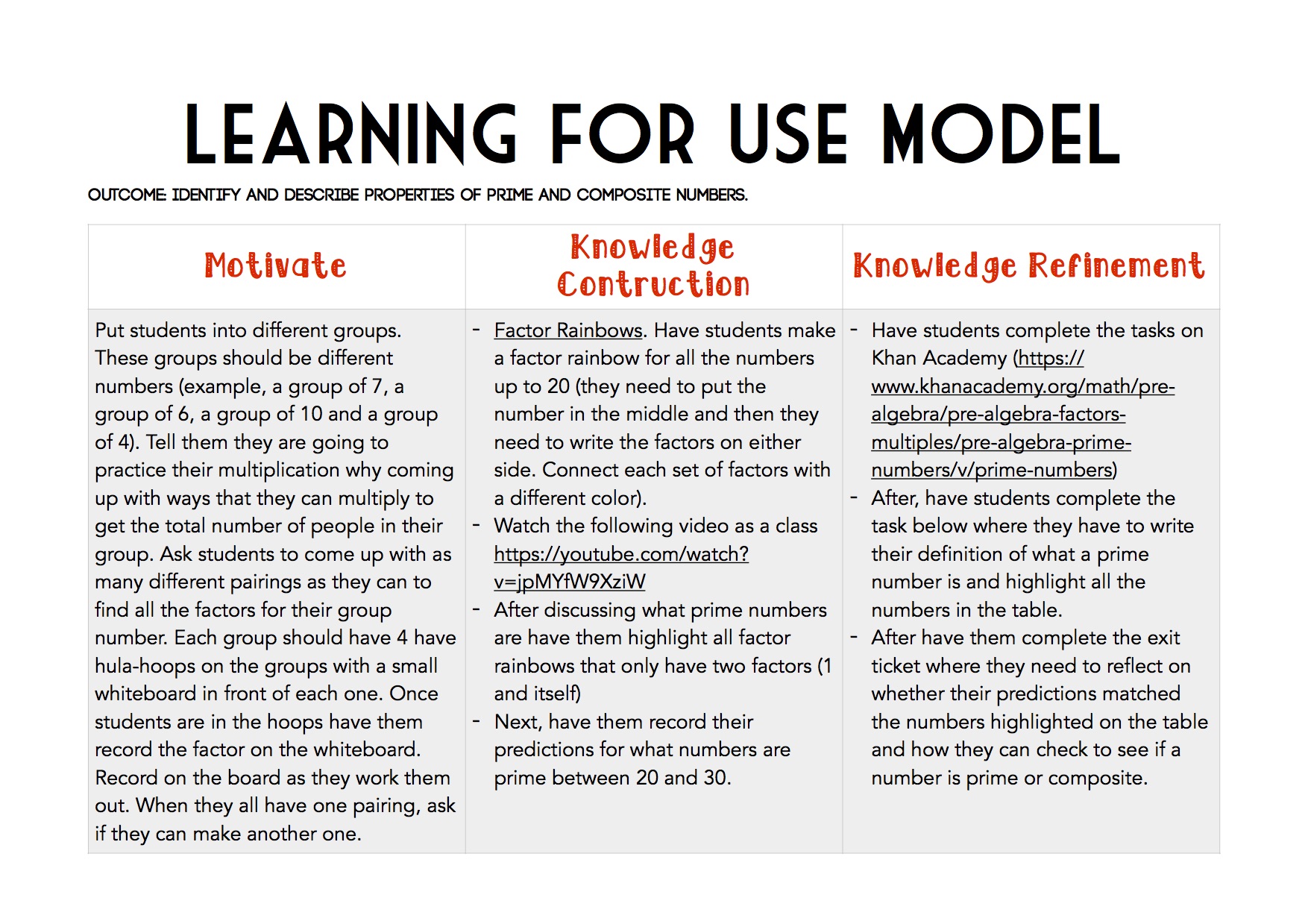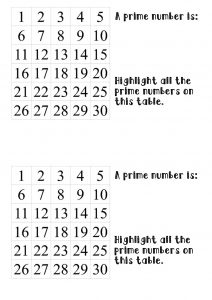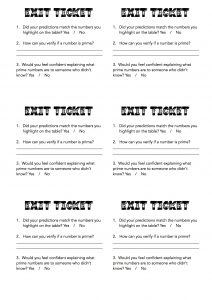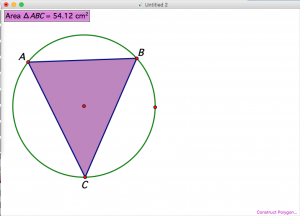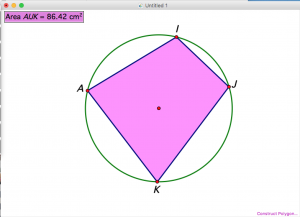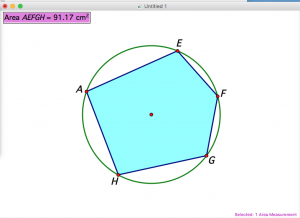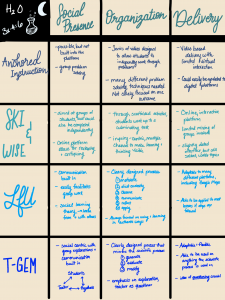Reflect upon knowledge representation and information visualization by examining a question that you thought about above for the resource sharing forum. In your entry, as you think about knowledge representation and info-vis, ensure that you refer to the software you chose to explore and cite your 2 required readings for this lesson.
- Consider the cognitive affordances of the software examined.
- Speculate on how information visualization software (name the software) could be embedded in the design of authentic learning experiences and,
- Suggest active roles for the teacher and the students, as well as a suitable topic. Endeavour to make connections with your future personal practice in this entry.
The software I added to the Resource Page was the ARIS (Augmented Reality Interactive Storytelling) game engine created by Field Day. This resource affords embodied learning from both the view of embodied as physical movement in the space (Stevens, 2012) and embodied as cognition that is embedded within artificial environments including simulations (Winn, 2003) and situated cognition AR activities (Bujak, et al., 2013). It is extremely versatile for teachers interested in informational visualization in simulations or creating place-based games and explorations. I considered two possible ways ARIS software could be embedded into authentic learning experiences.
- Buoyancy & Gravity in Gas
In the Discussion Activity for this lesson, I considered the challenge of understanding the buoyant force for fluids that were liquids. ARIS provides a guided, interactive simulation game that explores the buoyant force in air. In their collection of mini-games set in the comic book world The Yard, students will find Hot Air Balloon which allows learners to explore concepts of air pressure, temperature, buoyancy, gravity and volume as they attempt to fly a hot air balloon longer and longer distances and read the dialogue as the kids from the junkyard try to figure out the science behind it all. As Srinivasan et al. (2006) observe, “Generally speaking, it is less expensive to develop a simulation than to provide real experience” (p.137). Few if any students will have the pleasure of exploring buoyancy and air pressure in a real hot air balloon but such simulations could easily be integrated into a unit for primary children on natural forces or junior students studying flight. Nevertheless, this simulation may not do as well as a stand-alone activity and would be more effective in terms of learning outcomes after students explored real objects and began to be curious. “A learner’s success with learning new material can be described in terms of the learner’s prior knowledge, ability, and motivation (Schraw et al., 2005). Prior knowledge accounts for the largest amount of variance when predicting the likelihood of success with learning new material (Shapiro, 2004)” (Srinivasan et al., 2006). Perhaps including this as part of a WISE project or after building miniature models of hot air balloons and watching a video of real hot air balloons can lead to the question of what it would take to make their models float like the real thing and more importantly, why their models would not float but much larger objects in real life will. As it relates to my own practice as Teacher Librarian, providing those videos or making time to play this game in tandem with their Science teachers’ coverage of these topics (or creating the WISE project) would be a useful incorporation for their Library periods.
- Exploring Geometry Using Hand-Held Games
The most exciting application of ARIS software, however, seems to be in its potential to create place-based, interactive, AR quests or games for hand-held devices along the lines of Pokemon GO. All of the pre-made ARIS games at the moment focus on Science concepts but I feel like there is interesting potential for Math instruction as well. Sinclair and Bruce (2015) discuss the value of engaging primary school aged children in more geometry using technology. As I was exploring the ARIS teacher tutorial, I was immediately struck by the possibility of teachers designing geometry quests that required students to actually move around the school, yard, or neighbourhood on a geometry scavenger hunt or even move following certain paths in the space in search of QR codes. Sinclair and Bruce (2015) share that “studied in North America have shown that geometry receives the least attention of the mathematical strands” (p.319). By grounding it in place-based, mobile TELEs teachers can weave geometric discussions into other strands of Mathematics such as numeracy and data management simply by making connections to the game. In addition, Sinclair and Bruce (2015) note the need extend “primary school geometry from its typical passive emphasis on vocabulary…to a more active meaning-making orientation…(including composing/decomposing, classifying, mapping and orienting,,,)” (p.32). Using ARIS to create activities around the school yard such as mapping all the right angles or using the satellite map feature to decompose the shapes of the school’s roof into composite shapes that can be classified allows students to visualize this kind of mathematical information in novel and engaging ways that take mathematics out of the textbook and into the real world. These endeavours correspond with the definition of Caleb Gattegno’s definition of the strand which Sinclair and Brown (2015) share: “Geometry is an awareness of imagery” (p.321).
In both these applications of Info-Vis software the teacher’s role would be to introduce the technology, create or aid in logging on and in, and perhaps provide some basic tutorials, and aid in the inevitable troubleshooting. Where ARIS for Mathematics is concerned, teachers would also be responsible for creating the augmented reality interactive stories that guide students in their math adventures. It’s important that teachers have a mature understanding of Content Knowledge for their target grade and particular class as they are designing these activities. Srinivasan et al. (2006) discusses “one aspect of motivation…goal challenge” which is explained as: “If learning goals are too steep for a learner’s current context, learning is not successful. On the other hand, when material is simple for the learner, the instruction can…lead to diminished performance…Thus, the task must present an optimal learning challenge…When this type of task is presented, students will perceive themselves as competent enough to be successful and enticed enough by the learning task to sustain their attention” (p.139). The students’ roles would be to interact with the software, reading, trying, re-reading, collaborating with their peers, and recording their findings or reporting back in whatever manner the activities warrant, hopefully within or through the technology that students are becoming familiar with as they interact with the content and each other within the game.
References
Bujak, K. R., Radu, I., Catrambone, R., MacIntyre, B., Zheng, R., & Golubski, G. (2013). A psychological perspective on augmented reality in the mathematics classroom. Computers & Education, 68, 536-544
Sinclair, N., & Bruce, C. D. (2015). New opportunities in geometry education at the primary school. ZDM, 47(3), 319-329.
Srinivasan, S., Perez, L. C., Palmer,R., Brooks,D., Wilson,K., & Fowler. D. (2006). Reality versus simulation. Journal of Science Education and Technology, 15(2), 137-141.
Reed Stevens (2012) The Missing Bodies of Mathematical Thinking and Learning Have Been Found, Journal of the Learning Sciences, 21(2), 337-346.
Winn, W. (2003). Learning in artificial environments: Embodiment, embeddedness, and dynamic adaptation. Technology, Instruction, Cognition and Learning, 1(1), 87-114.
